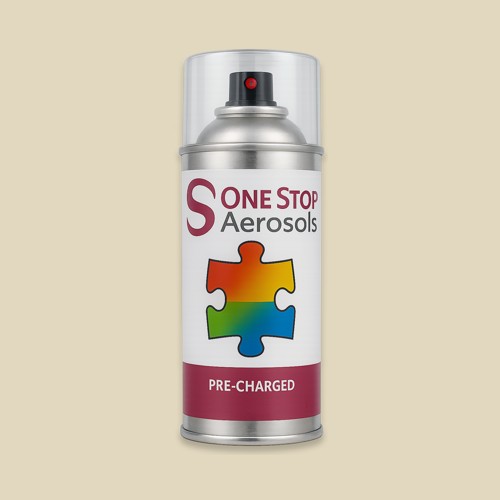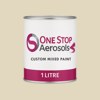- Landline -01908 991096
- Mobile -07793 053282
- Landline -01908 991096
- Mobile -07793 053282
Pantone 454 spray paint from £12.99 (excl. VAT) for a 400 ml custom mixed can.






| Format | Size | Coverage | Price |
|---|---|---|---|
| Aerosol Cans | |||
| 1K | 400 ml | 1.5 m2 | £12.99 |
| 2K | 400 ml | 1.5 m2 | £19.99 |
| 2K Air Dry | 400 ml | 1.5 m2 | £15.99 |
| Tins | |||
| 1K | 1 litre | 10 m2 | £39.99 |
| 1K | 2 litres | 20 m2 | £59.99 |
| 2K Air Dry | 1 litre | 10 m2 | £44.99 |
| 2K Air Dry | 2 litres | 20 m2 | £69.99 |
| Tester Pots | |||
| 1K | 60 ml | 0.5 m2 | £7.99 |
| 2K Air Dry | 60 ml | 0.5 m2 | £9.99 |
| 1K | 100 ml | 1 m2 | £9.99 |
| 2K Air Dry | 100 ml | 1 m2 | £11.99 |
| 1K | 250 ml | 2.5 m2 | £14.99 |
| 2K Air Dry | 250 ml | 2.5 m2 | £16.99 |
| Touch up Pens | |||
| 1K | 20 ml | 0.25 m2 | £7.99 |
| 2K Air Dry | 20 ml | 0.25 m2 | £9.99 |
Colour: Pantone 454
Product type: Custom mixed aerosols, tins & pots.
Brand: One Stop Aerosols
Product Code: 6037
Price: £7.99 – £69.99 + VAT
Availability: In Stock
RGB Colour Code: 226-216-191
Hexadecimal Colour Code: #E2D8BF
30-day returns policy on all eligible faulty products.
Pantone 454 forms part of our Pantone C Paint Colour Chart. Each order is mixed fresh using Lechler binders and colourants so that aerosols, tins and touch up products can be reordered later with confidence for snagging, repairs and small additions.
Combined with the correct primer, this system can be suitable for many common substrates such as metal, correctly prepared plastics and timber. The goal is a smooth, dependable finish with sound adhesion and stable colour under normal service conditions.
Not sure whether to choose 1K, 2K or 2K Air Dry? The info icons beside Size, Paint Type and Gloss Level give a quick overview, or you can get in touch if you would like us to talk through the options.
Cause: Contamination, glossy or un-keyed surface, wrong or no primer, moisture on the substrate.
Fix: Strip loose areas, degrease, abrade to a uniform key, and re-prime with a substrate-appropriate primer.
Prevent: Always degrease first, then abrade. Match primer to substrate, and respect drying times before topcoat.
Cause: Heavy passes, too far or too close spraying distance, low temp, poor flow, or insufficient flash-off.
Fix: After cure, denib and flat with fine abrasive, then recoat with lighter, even passes.
Prevent: Keep a steady distance, warm the can, apply light coats, and allow proper flash-off between coats.
Cause: Spraying too far away, fast pass speed, high airflow, or low temperature causing solvent to flash in the air.
Fix: Lightly denib, then apply a wetter pass at the correct distance and speed.
Prevent: Maintain consistent distance, overlap passes by one third, and avoid windy or very cold conditions.
Cause: Silicone, oil or wax contamination that repels the coating.
Fix: Stop, allow to dry, sand out affected areas, deep clean with a suitable degreaser, then re-prime and recoat.
Prevent: Keep the work area silicone free. Avoid furniture polishes and low-grade masking tapes that shed residue.
Cause: Uneven film build, inconsistent overlap, or recoating outside the recommended window.
Fix: After cure, lightly key the surface and apply one or two uniform coats within the specified recoat window.
Prevent: Use consistent pass speed and overlap, and let each coat flash-off before the next.
Cause: Excessive film per pass or lingering too long in one area.
Fix: Allow full cure, nib the defect level with fine abrasive, then recoat with lighter passes.
Prevent: Apply multiple light coats, keep the gun or can moving, and avoid trying to achieve full coverage in one pass.
Cause: Recoating too soon or too late, solvent attacking a sensitive base, or incompatible layers.
Fix: Allow to dry fully, sand back to a stable layer, apply a compatible primer, then recoat within the advised window.
Prevent: Observe recoat times, test compatibility on a small area, and avoid heavy wet coats over uncured layers.
Please note: our Pantone 454 aerosols, tin & pots are custom mixed and should be test-sprayed on a small, inconspicuous area before full application. We cannot accept responsibility for any colour difference once paint has been applied to your surfaces. If the colour is not accurate, please contact us to arrange a return.